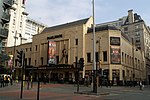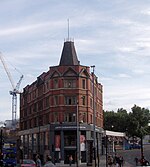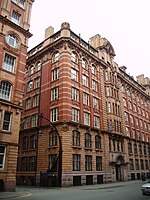Kimpton Clocktower Hotel
Alfred Waterhouse buildingsGrade II* listed buildings in ManchesterHotel buildings completed in 1895Hotels established in 1996Hotels in Manchester

The Kimpton Clocktower Hotel is a historic commercial building, now a hotel, at the corner of Oxford Street and Whitworth Street in Manchester, England. The building was originally constructed in segments from 1891 to 1932 as the Refuge Assurance Building.
Excerpt from the Wikipedia article Kimpton Clocktower Hotel (License: CC BY-SA 3.0, Authors, Images).Kimpton Clocktower Hotel
Oxford Street, Manchester City Centre
Geographical coordinates (GPS) Address Website External links Nearby Places Show on map
Geographical coordinates (GPS)
| Latitude | Longitude |
|---|---|
| N 53.4744 ° | E -2.2403 ° |
Address
Kimpton Clocktower Hotel (Refuge Building)
Oxford Street
M60 7HA Manchester, City Centre
England, United Kingdom
Open on Google Maps









